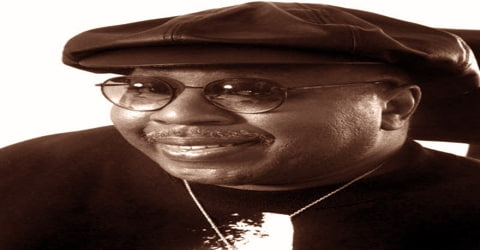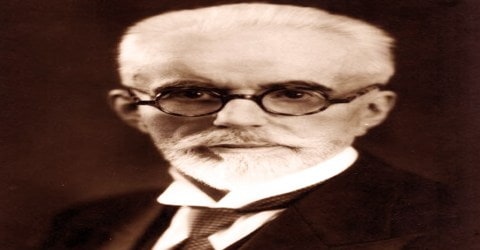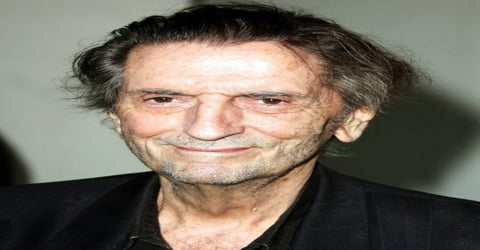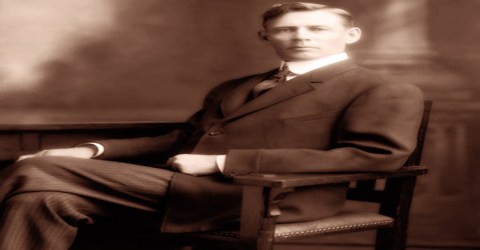Biography of Marshall W. Nirenberg
Marshall W. Nirenberg – American biochemist and geneticist.
Name: Marshall Warren Nirenberg
Date of Birth: April 10, 1927
Place of Birth: New York City, New York, United States
Date of Death: January 15, 2010 (aged 82)
Place of Death: New York City, New York, United States
Occupation: Biochemist, Geneticist
Father: Harry Edward Nirenberg
Mother: Minerva (Bykowsky)
Spouse/Ex: Perola Zaltzman-Nirenberg (1961-2001; her death), Myrna M. Weissman (m. 2005-2010; his death)
Early Life

A celebrated American geneticist and biochemist and co-recipient, with Robert William Holley and Har Gobind Khorana, of the 1968 Nobel Prize for Physiology or Medicine, Marshall W. Nirenberg was born on 10th April 1927, in New York City, New York, the U.S. He earned Nobel Prize for “breaking the genetic code” and describing how it operates in protein synthesis. In the same year, together with Har Gobind Khorana, he was awarded the Louisa Gross Horwitz Prize from Columbia University.
Nirenberg demonstrated that, with the exception of “nonsense codons,” each possible triplet (called a codon) of four different kinds of nitrogen-containing bases found in deoxyribonucleic acid (DNA) and, in some viruses, in ribonucleic acid (RNA) ultimately causes the incorporation of a specific amino acid into a cell protein. Nirenberg’s work and that of Holley and Khorana helped to show how genetic instructions in the cell nucleus control the composition of proteins.
Born in New York City, Marshall W. Nirenberg developed an early interest in biology. As a young man, he attended the University of Florida at Gainesville from where he earned his B. Sc. and M. Sc. degrees in Zoology before working for his Ph. D. degree from the Department of Biological Chemistry at the University of Michigan. He eventually became a research biochemist at the National Institutes of Health (NIH) where he initially focused his research on DNA, RNA, and protein. In collaboration with H. Matthaei, he demonstrated that messenger RNA is required for protein synthesis and that synthetic messenger RNA preparations can be used to decipher various aspects of the genetic code. His groundbreaking research led to his appointment as the head of the Section of Biochemical Genetics at the National Heart Institute, a position he served in until his death decades later. His later research focused on neuroscience, neural development, and homeobox genes.
Childhood, Family and Educational Life

Marshall W. Nirenberg, in full Marshall Warren Nirenberg, an American biochemist, and geneticist, was born on 10th April 1927, in New York City, to Minerva (Bykowsky) and Harry Edward Nirenberg, a shirtmaker. His family shifted to Florida when he was a young boy. During this time, he had already developed a special liking for biology as his favorite subject.
Nirenberg enrolled at the University of Florida at Gainesville and earned his B. Sc. degree in 1948 and a master’s degree in zoology in 1952. He was also a member of the Pi Lambda Phi Fraternity. As a college student, he became interested in biochemistry. Nirenberg furthered his education at the University of Michigan, Ann Arbor, and earned his doctorate from the Department of Biological Chemistry in 1957. His Ph.D. thesis was on the study of a permease for hexose transport in ascites tumor cells.
Personal Life
Marshall W. Nirenberg first married Perola Zaltzman, a chemist from the University of Brazil, Rio de Janeiro, in 1961. His wife died in 2001 after 40 years of marriage.
Due to this unfortunate event, Nirenberg married Myrna M. Weissman, Professor of Epidemiology and Psychiatry at Columbia University College of Physicians and Surgeons, as his second wife in 2005. He had four stepchildren: Susan Weissman of Evanston, Illinois, Judith Weissman of New York, New York, Sharon Weissman of New Haven, Connecticut, and Jonathan Weissman of San Francisco, California.
Career and Works
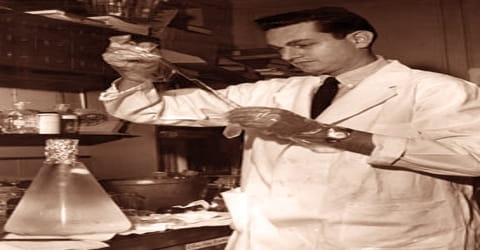
In 1957, Marshall W. Nirenberg joined the staff of the National Institutes of Health (NIH) in Bethesda, Md. His research earned him the National Medal of Science in 1964, and the following year he was elevated to director of biochemical genetics at the NIH, a position he held for the remainder of his career. Nirenberg began to study the steps that relate DNA, RNA, and protein in 1959. By this time, previous experiments by other scientists had shown DNA to be the molecule of genetic information. However, it was not known how DNA directed the expression of proteins, or what role RNA had in these processes.
Nirenberg teamed up with, the German scientist Heinrich J. Matthaei at the National Institutes of Health to answer these questions. They produced RNA composed solely of uracil, a nucleotide that only occurs in RNA. They then added this synthetic poly-uracil RNA into a cell-free extract of Escherichia coli which contained the DNA, RNA, ribosomes and other cellular machinery for protein synthesis. They added DNase, which breaks apart the DNA so that no additional proteins would be produced other than that from their synthetic RNA.
Nirenberg was able to establish the rules by which the genetic information in DNA is translated into proteins, and identified the particular codons a codon is a sequence of three chemical units of DNA that specify each of the 20 amino acid units of which protein molecules are constructed. He presented his findings before a small group of scientists at the International Congress of Biochemistry in Moscow in 1961. His discoveries were of great significance to the scientific fraternity and he quickly gained attention for the work he was doing.
Marshall W. Nirenberg presented a paper to a small group of scientists, in August 1961, at the International Congress of Biochemistry in Moscow. Within a few years, his research team had performed similar experiments and found that three-base repeats of adenosine (AAA) produced the amino acid lysine, and cytosine repeats (CCC) produced proline. The next breakthrough came when Philip Leder, a postdoctoral researcher in Nirenberg’s lab, developed a method for determining the genetic code on pieces of tRNA (see Nirenberg and Leder experiment). This greatly sped up the assignment of three-base codons to amino acids so that 50 codons were identified in this way. Khorana’s experiments confirmed these results and completed the genetic code translation.
Nirenberg was promoted to the head of the Section of Biochemical Genetics in the National Heart Institute (now the National Heart, Lung, and Blood Institute), in 1962, a position he held until his death. He switched to neurobiology during his later years and performed studies on neuroscience, neural development, and the homeobox genes.
The period between 1961 and 1962 is often referred to as the “coding race” because of the competition between the labs of Nirenberg at NIH and Nobel laureate Severo Ochoa at New York University Medical School, who had a massive staff. Faced with the possibility of helping the first NIH scientist win a Nobel prize, many NIH scientists put aside their own work to help Nirenberg in deciphering the mRNA codons for amino acids. Dr. DeWitt Stetten, Jr., director of the National Institute of Arthritis and Metabolic Diseases, called this period of collaboration “NIH’s finest hour”.
Marshall W. Nirenberg used his model as a platform for explorations into morphine’s effects on the nervous system and neural synapse formation in chicken retinas, in 1970. During this time scientists discovered that under the influence of certain factors normal genes could be “switched on,” becoming overactive in the form of oncogenes (cancer-causing genes). This finding, which demonstrated that gene activity could change and that these changes could affect cell growth, stimulated Nirenberg’s interest. His research had begun to focus on nervous system growth and development, but how these processes were controlled was unknown. Nirenberg reasoned that to further understand the development of the nervous system, it was necessary to understand the genes that had the greatest influence on neurological development in the embryo.
Nirenberg became a founding member of the World Cultural Council, in 1981. In 1986, Nirenberg’s achievements and contributions to the field of biochemistry genetics was recognized at an event honoring Maimonides and Menachem M. Schneerson, in the nation’s capital, hosted by Bob Dole and Joe Biden. He was elected to the American Philosophical Society in 2001.
By the late 1980s a set of genes, known as homeobox genes (discovered in 1983), had become central to his studies. His experiments concerning homeobox genes and the assembly of the nervous system in Drosophila (fruit fly) were crucial to the advancement of the field of neurobiology. Much of Nirenberg’s work on nervous system development in Drosophila proved relevant to studies on the development of the nervous system in humans.
Awards and Honor
Marshall W. Nirenberg was honored with the National Medal of Science in 1964, and in 1968, the National Medal of Honor by President Lyndon B. Johnson. He also won the Albert Lasker Award for Basic Medical Research in 1968.
Marshall W. Nirenberg along with Robert W. Holley and Har Gobind Khorana was awarded the Nobel Prize in Physiology or Medicine 1968 “for their interpretation of the genetic code and its function in protein synthesis”.
Death and Legacy
Marshall W. Nirenberg died on January 15th, in 2010. He had had cancer during the late stages of his life. He was 82 years old when he passed away. He was also survived by his sister, Joan Nirenberg Geiger of Dallas, Texas, several nieces, and a nephew.
Nirenberg in collaboration with Heinrich Matthaei became the first team to elucidate the nature of a codon, in 1961, at the National Institutes of Health. Using a cell-free system to translate a poly-uracil RNA sequence, they discovered that the polypeptide that they had synthesized consisted of only the amino acid phenylalanine. This discovery led to the deduction that the codon UUU specified the amino acid phenylalanine.
Information Source:

